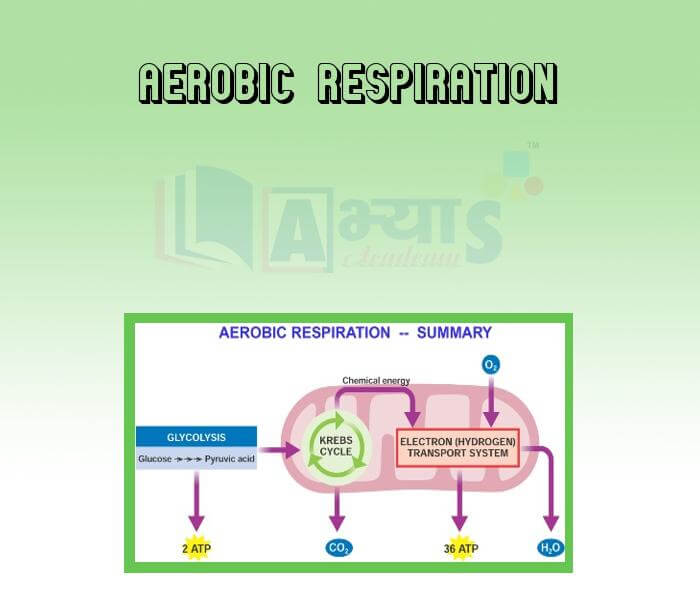Aerobic Respiration










Aerobic Respiration
Aerobic respiration: The complete oxidation of food yielding carbon dioxide, water and energy in the presence of oxygen is called aerobic respiration. This respiration starts in the cytoplasm (glycolysis) and continues in the mitochondria (Kreb's cycle) of the cell. The products of this reaction include: ATP, carbon dioxide and water.
The number of molecules of ATP formed by each glucose molecule during aerobic respiration is 38. Hence, the energy made available is much greater than in the case of anaerobic respiration.
In the process, energy is produced. This energy is used to drive cellular processes that are endothermic (processes that absorb energy). steps take place during aerobic respiration are:
In Cytoplasm (Glycolysis)
In Mitochondria (Kreb cycle )
Which of the following are correct ? (a) The word aerobic means in presence of oxygen. (b) These food molecules are then broken down into carbon dioxide and water to release energy. | |||
| Right Option : C | |||
| View Explanation | |||
_____________ ATP molecule are produced by 1 gram molecule of glucose through aerobic respiration . | |||
| Right Option : B | |||
| View Explanation | |||
The process of breakdown of food in the cell with the release of energy is called ________________ . | |||
| Right Option : A | |||
| View Explanation | |||
Students / Parents Reviews [10]
One of the best institutes to develope a child interest in studies.Provides SST and English knowledge also unlike other institutes. Teachers are co operative and friendly online tests andPPT develope practical knowledge also.

Aman Kumar Shrivastava
10thIt has a great methodology. Students here can get analysis to their test quickly.We can learn easily through PPTs and the testing methods are good. We know that where we have to practice

Barkha Arora
10thIt was a good experience with Abhyas Academy. I even faced problems in starting but slowly and steadily overcomed. Especially reasoning classes helped me a lot.

Cheshta
10thAbhyas Methodology is very good. It is based on according to student and each child manages accordingly to its properly. Methodology has improved the abilities of students to shine them in future.

Manish Kumar
10thMy experience with Abhyas is very good. I have learnt many things here like vedic maths and reasoning also. Teachers here first take our doubts and then there are assignments to verify our weak points.

Shivam Rana
7thMy experience was very good with Abhyas academy. I am studying here from 6th class and I am satisfied by its results in my life. I improved a lot here ahead of school syllabus.

Ayan Ghosh
8thI have spent a wonderful time in Abhyas academy. It has made my reasoning more apt, English more stronger and Maths an interesting subject for me. It has given me a habbit of self studying

Yatharthi Sharma
10thA marvelous experience with Abhyas. I am glad to share that my ward has achieved more than enough at the Ambala ABHYAS centre. Years have passed on and more and more he has gained. May the centre flourish and develop day by day by the grace of God.

Archit Segal
7thIt was good as the experience because as we had come here we had been improved in a such envirnment created here.Extra is taught which is beneficial for future.

Eshan Arora
8thBeing a parent, I saw my daughter improvement in her studies by seeing a good result in all day to day compititive exam TMO, NSO, IEO etc and as well as studies. I have got a fruitful result from my daughter.
